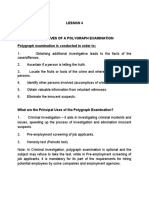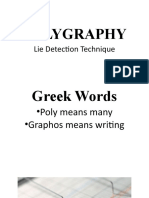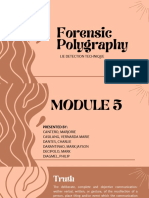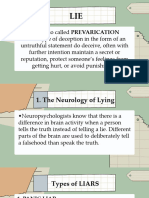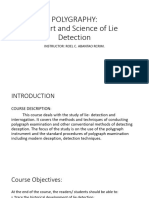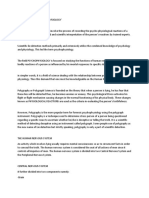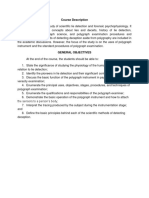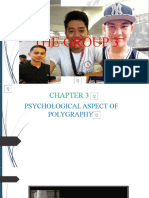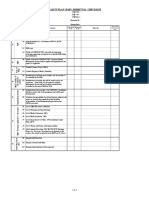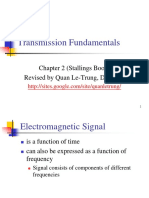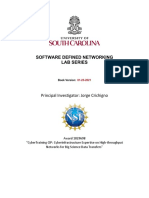0% found this document useful (0 votes)
17 views9 pagesForensic Lie Detection
The document provides an overview of polygraphy, the scientific method of detecting deception through physiological responses. It explains the concepts, objectives, types of lies, and the physiological basis of lie detection, emphasizing the role of the Autonomic Nervous System. Additionally, it discusses non-verbal behaviors and their significance in assessing truthfulness during polygraph examinations.
Uploaded by
jecelounakilaCopyright
© © All Rights Reserved
We take content rights seriously. If you suspect this is your content, claim it here.
Available Formats
Download as PDF, TXT or read online on Scribd
0% found this document useful (0 votes)
17 views9 pagesForensic Lie Detection
The document provides an overview of polygraphy, the scientific method of detecting deception through physiological responses. It explains the concepts, objectives, types of lies, and the physiological basis of lie detection, emphasizing the role of the Autonomic Nervous System. Additionally, it discusses non-verbal behaviors and their significance in assessing truthfulness during polygraph examinations.
Uploaded by
jecelounakilaCopyright
© © All Rights Reserved
We take content rights seriously. If you suspect this is your content, claim it here.
Available Formats
Download as PDF, TXT or read online on Scribd
/ 9


